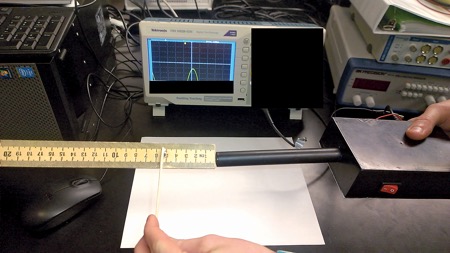Titanium alloys are alloys based on titanium with other elements added. Titanium is the seventh most abundant metal in the earth’s crust, but it is difficult to extract titanium from its oxides.

Classification of Titanium and Titanium Alloy
Alpha titanium alloy
The structure is stable, the wear resistance is higher than pure titanium, and the anti-oxidation ability is strong. Its strength and creep resistance are maintained at temperatures of 500 600 C, but it can not be strengthened by heat treatment, and its strength at room temperature is not high.
Near-alpha Titanium Alloy
Aluminum, tin, zirconium and a small amount of molybdenum, vanadium and manganese are the main stable elements in the composition. It has excellent creep resistance at high temperature, good thermal stability and welding performance. The long-term working temperature is 300 C. It is produced by vacuum consumable arc furnace.
Beta titanium alloy
Without heat treatment, the alloy has higher strength. After quenching and aging, the alloy is further strengthened, and the room temperature strength can reach 1372-1666 MPa. However, the thermal stability is poor, so it is not suitable for use at high temperature.
Alpha+beta titanium alloy
It is a dual-phase alloy with good comprehensive properties, good structural stability, good toughness, plasticity and high temperature deformation properties, and can be processed under hot pressure, quenched and aged to strengthen the alloy. After heat treatment, the strength increases by 50%-100% compared with annealing state, and the high temperature strength can work for a long time at the temperature of 400 500 and its thermal stability is inferior to that of alpha titanium alloy.
Characteristics of Titanium and Titanium Alloys
High cost, high specific strength
Titanium alloys can be divided into heat resistant alloys, high strength alloys, corrosion resistant alloys (Ti-Mo, Ti-Pd alloys, etc.), low temperature alloys and special functional alloys (Ti-Fe hydrogen storage materials and Ti-Ni memory alloys).
Low density and High strength
The density of titanium alloys is generally about 4.51g/cubic centimeter, which is only 60% of steel. Some high strength titanium alloys exceed the strength of many alloy structural steels. Therefore, the specific strength (strength/density) of titanium alloys is much greater than that of other metal structural materials, and parts with high strength, good rigidity and light weight can be produced.
High thermal strength
The required strength can be maintained at medium temperature, and the specific strength of these two kinds of titanium alloys can be maintained at 450 – 500 C for a long time. The working temperature of titanium alloy can reach 500 C, while that of aluminium alloy can be below 200 C.
Good cryogenic performance
Titanium alloy can maintain its mechanical properties at low and ultra-low temperatures. Titanium alloys with good Cryogenic Properties and very low interstitial elements, such as TA7, can maintain a certain degree of plasticity at – 253 C. Therefore, titanium alloy is also an important low temperature structural material.
Low thermal conductivity elasticity
The thermal conductivity of titanium is about 1/4 of nickel, 1/5 of iron and 1/14 of aluminium. The thermal conductivity of various titanium alloys is about 50% lower than that of titanium. The elastic modulus of titanium alloy is about 1/2 of that of steel, so its rigidity is poor and easy to deform. It is not suitable for making slender rods and thin-walled parts. The rebound of machined surface is about 2-3 times of that of stainless steel, which results in severe friction, adhesion and bond wear of tool flank.
High chemical activity
Titanium has high chemical activity and strong chemical reactions with O, N, H, CO, CO2, steam and ammonia in the atmosphere. Titanium has high chemical affinity and is easy to adhere to friction surfaces. Titanium or titanium alloys can be oxidized to form many beautiful colors (haircut scissors)
Technological characteristics
The common form of titanium alloy is mixing with aluminium and vanadium. This material has the characteristics of good malleability and low creep. The ductility of titanium alloy is limited – the bending radius of thin plate is more than 1.5 times of the thickness. It can be welded, but it is difficult, but easy to diffuse bonding.
Shortcoming
Titanium alloys are very expensive. As a result, they were initially mostly used in aircraft structures, aircraft, and high-tech industries such as petroleum and chemical industries. There are also some Titanium alloys for people’s livelihood, but the prices of these products are still high, mostly belong to high-priced products.
Main Applications of Titanium Alloys
Aerospace
Most of the SR-71 fuselage is titanium, which was obtained from the Soviet Union at the height of the Cold War. Lockheed used various possible camouflage methods to prevent the Soviet government from knowing the uses of the titanium. To reduce costs, they use titanium alloys that are softer and easier to process at lower temperatures. The finished aircraft is painted dark blue (approaching black) to enhance the camouflage effect of thermal radiation cooling and high altitude.
Medical care
Titanium and titanium alloy materials can be processed as human implants. The elastic modulus of titanium alloy is similar to that of human skeleton, and the compatibility of titanium alloy is good. The surface of titanium alloy implanted into human body needs to be oxidized. After treatment, honeycomb holes will form on the surface, so honeycomb holes on the surface are conducive to cell growth and bonding. And there is no toxicity and other effects. The corrosion resistance of titanium alloy is very strong. The acid-base value of human body varies from time to time, and the corrosion resistance of titanium alloy is very good.
